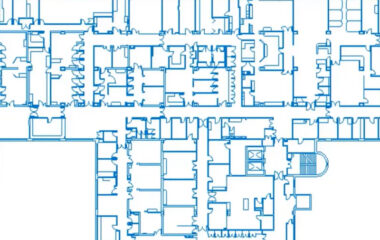Insight from Hazel Bedson, Marketing and Operations Director, Service Works Global, featured in FM Director and People Management.
Facilities management has been the headline news in the last week, though unfortunately for the wrong reasons. The story that more than 100 schools had been told to close just days before the new term started because of reinforced autoclaved aerated concrete (RAAC) – or “crumbling concrete” – in their walls quickly snowballed into huge news.
As a parent myself, I was left wondering if my child would be affected. And as it emerged that more schools, as well as hospitals, may be impacted, people are now questioning their safety in public buildings.
For FM teams, safety of building occupants is always a top priority. I’m sure that this story will rumble on for a long time so I’m not going to theorise where the blame lies for us to have got to this point, but rather consider the role that FM could now play in sorting this mess out.
Proactive Approach
A key aspect of FM is planning ahead, whether that’s through predictive maintenance of assets or knowing when part of an estate is likely in need of a refurbishment.
The first warning signs around RAAC were as far back as 2018, when a roof collapsed at a school in Kent. In an ideal world, school estate teams would have seen that news and started to undertake surveys and checks over whether their buildings were at risk. However, we don’t live in an ideal world.
The pandemic obviously disrupted a lot of plans, and Government funding cuts to education have also had an impact. Furthermore, there is no centralised estate portfolio, so each school has its own FM system. In some cases, this may be as rudimentary as a janitor and paper documents. In others, a headmaster may manage an estate via spreadsheets.
In my experience, there are not many schools that have a sophisticated system that provides a comprehensive estate overview. Such a system would not necessarily prevent the current crisis – RAAC was used in schools built in the 1950s and decades that followed – but it would certainly enable estate teams and central Government to avoid situation we now find ourselves in.
Digital Estate Management
Schools are by their nature sprawling estates, often comprising a mixture of buildings of various size, year of build and condition. Even the best kept paper records or spreadsheets don’t cut it; they are difficult to keep fully up to date and can’t easily be accessed by all stakeholders.
Investing in technology of course presents an upfront cost, but the benefits are huge, and the payback period can often be less than two years – that’s why we call it an investment.
We recently created a 3D building information model (BIM) of a school in Gothenburg, Sweden. The local authority commissioned this work as it realised that various renovations and extensions made to the school over the years had not been captured in its existing 2D drawings. With more works planned, this presented a major challenge to architects and designers.
Over the course of a single weekend, we were able to laser scan the entire estate and from there we created the 3D model. This meant that architects, designers and consultants all had access to a model containing exact measurements of building interiors and exteriors without having to second guess if those measurements were correct.
Now, imagine if one of the schools with RAAC had utilised BIM information following the 2018 Kent story. In addition to the model, the estate teams could have employed a CAFM system to map out the materials present in the buildings walls and ceilings, as well as other information such as asset location, condition and warranty.
That school would have been able to either confirm that there was no RAAC present in its estate or realise that there was and take proactive action to address the issue. This would have helped the Department of Education by shining a light on the problem – if more schools had been able to flag RAAC sooner, the Government might have reacted faster.
Secondly, early identification of RAAC would have meant that estate teams could fix the issue quicker and avoided the disruption of schools being shut down on the eve of the new school year.
It will require multiple parties to work together to solve the RAAC issue, but as FMs it provides us with the perfect opportunity to push for bigger budgets and demonstrate why it’s so important that we have a full view of our estates, to prevent a similar crisis from occurring in the future.
 UK
UK






